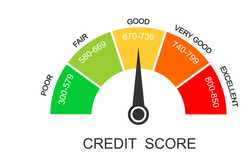How Do I Check My Credit Score


Our evaluations and opinions are not influenced by our advertising relationships, but we may earn a commission from our partners’ links. This content is created by TIME Stamped, under TIME’s direction and produced in accordance with TIME’s editorial guidelines and overseen by TIME’s editorial staff. Learn more about it.
Your credit score is sort of like a financial report card. It shows how responsible you are with credit, and helps credit card issuers and lenders determine how much they risk losing money if they let you borrow it.
Your credit score can help you to understand your realistic options when it comes to applying for credit cards and other loans—and even spot things like missed payments and fraudulent activity. In other words, your credit score is extremely important. Because of this, you might be asking yourself, “How do I check my credit score?”
There are many simple ways to view your credit score, most of which are free. Let’s take a look at your options.
The three main credit bureaus used by the vast majority of lenders to determine your creditworthiness are Experian, Equifax, and TransUnion. These companies use the same type of information to generate your credit score, namely:
That brings up an interesting question—if they all use the same information, why might your credit score differ across each bureau? There are a few reasons.
When you open a credit card, you might assume that Experian, Equifax, and TransUnion are all alerted to the fact. That’s not always the case. An issuer may only check one or two credit bureaus to retrieve your information.
Even more surprising, credit card issuers are not required to report your activity to credit bureaus (though almost all of them do). They may only report to one credit bureau, which means your credit habits—good or bad—aren’t reflected in the credit score you get from the other two bureaus.
And because the credit bureaus are competitors, they don’t share information with each other.
Again, there’s more than one type of credit score. The two common credit scores are FICO and VantageScore. These numbers can be wildly different, so make sure you’re comparing apples to apples.
VantageScore is based on similar factors to FICO, but with a couple of differences. It assigns different weights to each category, and it specifically categorizes “balances” and “available credit” separately.
When a credit bureau assigns your credit score, it’s analyzing the information on your credit report. This information can be different for several reasons. For example, Experian Boost is a popular credit-building tool that allows you to claim responsible activity that isn’t necessarily credit-specific. For instance, you can link your checking account to Experian, and it will recognize on-time payments for things like utilities, internet, rent, and streaming services, and use that information to raise your credit score.
Using Experian Boost will only raise your Experian credit score which means it will be different from the score assigned by Equifax or TransUnion.

The three major credit bureaus—Experian, Equifax and TransUnion—have permanently extended a program that began in the pandemic allowing consumers to receive a free credit report from each bureau every week. (It used to be one per year from each bureau.) The website AnnualCreditReport.com is the way to access these reports. (We don’t know when the site will be renamed WeeklyCreditReport.com….)
You can get a free Experian FICO score and report directly through Experian once per month. You don’t have to input any payment information, though there is a paid option that provides more information if that’s what you’re after. Experian CreditWorks℠ Premium offers three-bureau reports and scores, score alerts, dark web surveillance, and more.
The myFICO service is the best way to get a picture of what most lenders are looking at when considering your application. It offers a free subscription that includes one-bureau coverage (Equifax) with your FICO score, credit report, and credit monitoring. You’ll receive one update per month. However, you can pay for more information, such as three-bureau coverage, identity monitoring, identity theft insurance, and more.

Several websites allow you to access your credit score for free. Some provide an updated credit score every week or so—others update once per month.
CreditSesame is a good example of a free and simple option. It works with TransUnion to provide your credit score which updates daily (though, because credit card issuers tend to report your activity once per month, you’re still likely to see outdated information).
Many credit cards nowadays offer a credit score as a free perk. You’ll usually receive an updated score after each monthly statement. Finding your credit score is often as easy as signing into your credit card account online. If your score isn’t featured prominently on the home page, it should take just a few clicks to find it.
There are myriad ways to check your credit score. But there are a few variables that make the score you find unlikely to be the exact number your potential lender sees. For example:
Still, investigating your credit score is a good way to get an idea of what lenders see. It will also help you to gauge your credit health and notice things like fraud, irregularities, missed payments, and more. And note that with weekly scores available free from all three bureaus, you can check them all before you apply for an auto loan, for example.
FICO credit score ranges give you a general idea as to how you’re performing in the eyes of credit card issuers and other lenders. The ranges are:
Your FICO credit score (the score used by the vast majority of lenders) is comprised of five elements that vary in magnitude:
Your VantageScore (often the score you’ll see when checking your own credit) is comprised of six elements:
You may notice that these are different from FICO. In short, “depth of credit” is your length of credit history. And “credit utilization,” “balances,” and “available credit” are your amounts owed.
Checking your own score will not lower it. Requesting your credit score will result in a soft inquiry, which only you can see. Soft credit pulls will remain on your credit report for between 12 and 24 months—but since you’re the only one that can see them, it doesn’t really matter.
The information presented here is created by TIME Stamped and overseen by TIME editorial staff. To learn more, see our About Us page.



